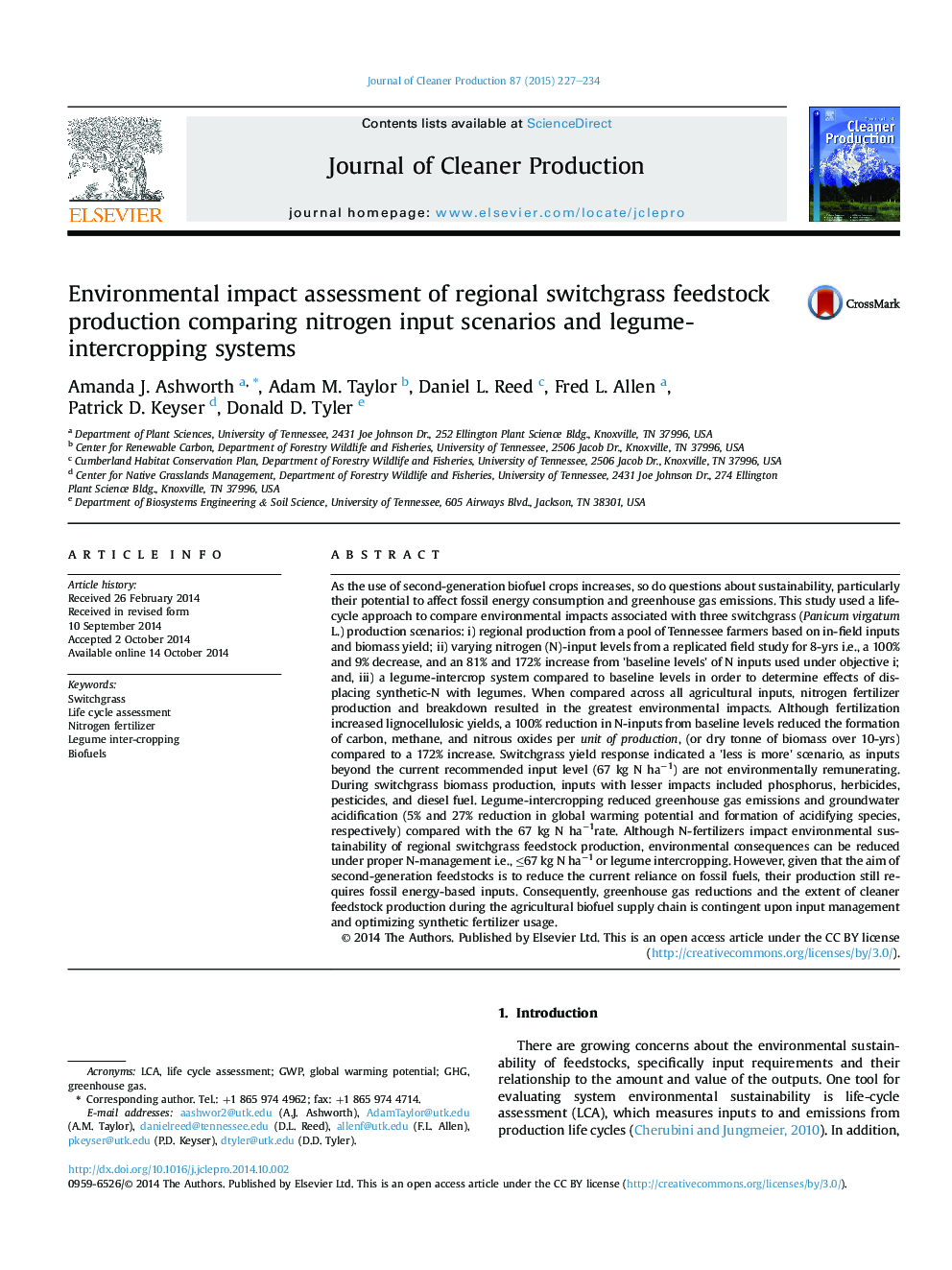| کد مقاله | کد نشریه | سال انتشار | مقاله انگلیسی | نسخه تمام متن |
|---|---|---|---|---|
| 8105139 | 1522159 | 2015 | 8 صفحه PDF | دانلود رایگان |
عنوان انگلیسی مقاله ISI
Environmental impact assessment of regional switchgrass feedstock production comparing nitrogen input scenarios and legume-intercropping systems
ترجمه فارسی عنوان
ارزیابی اثرات زیست محیطی تولید مواد اولیه تولید زباله منطقه ای در مقایسه با سناریوهای ورود نیتروژن و سیستم های کشت مخلوط علوفه
دانلود مقاله + سفارش ترجمه
دانلود مقاله ISI انگلیسی
رایگان برای ایرانیان
کلمات کلیدی
موضوعات مرتبط
مهندسی و علوم پایه
مهندسی انرژی
انرژی های تجدید پذیر، توسعه پایدار و محیط زیست
چکیده انگلیسی
As the use of second-generation biofuel crops increases, so do questions about sustainability, particularly their potential to affect fossil energy consumption and greenhouse gas emissions. This study used a life-cycle approach to compare environmental impacts associated with three switchgrass (Panicum virgatum L.) production scenarios: i) regional production from a pool of Tennessee farmers based on in-field inputs and biomass yield; ii) varying nitrogen (N)-input levels from a replicated field study for 8-yrs i.e., a 100% and 9% decrease, and an 81% and 172% increase from 'baseline levels' of N inputs used under objective i; and, iii) a legume-intercrop system compared to baseline levels in order to determine effects of displacing synthetic-N with legumes. When compared across all agricultural inputs, nitrogen fertilizer production and breakdown resulted in the greatest environmental impacts. Although fertilization increased lignocellulosic yields, a 100% reduction in N-inputs from baseline levels reduced the formation of carbon, methane, and nitrous oxides per unit of production, (or dry tonne of biomass over 10-yrs) compared to a 172% increase. Switchgrass yield response indicated a 'less is more' scenario, as inputs beyond the current recommended input level (67 kg N haâ1) are not environmentally remunerating. During switchgrass biomass production, inputs with lesser impacts included phosphorus, herbicides, pesticides, and diesel fuel. Legume-intercropping reduced greenhouse gas emissions and groundwater acidification (5% and 27% reduction in global warming potential and formation of acidifying species, respectively) compared with the 67 kg N haâ1rate. Although N-fertilizers impact environmental sustainability of regional switchgrass feedstock production, environmental consequences can be reduced under proper N-management i.e., â¤67 kg N haâ1 or legume intercropping. However, given that the aim of second-generation feedstocks is to reduce the current reliance on fossil fuels, their production still requires fossil energy-based inputs. Consequently, greenhouse gas reductions and the extent of cleaner feedstock production during the agricultural biofuel supply chain is contingent upon input management and optimizing synthetic fertilizer usage.
ناشر
Database: Elsevier - ScienceDirect (ساینس دایرکت)
Journal: Journal of Cleaner Production - Volume 87, 15 January 2015, Pages 227-234
Journal: Journal of Cleaner Production - Volume 87, 15 January 2015, Pages 227-234
نویسندگان
Amanda J. Ashworth, Adam M. Taylor, Daniel L. Reed, Fred L. Allen, Patrick D. Keyser, Donald D. Tyler,
